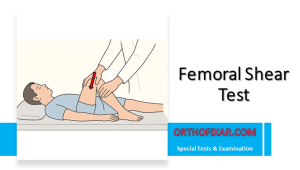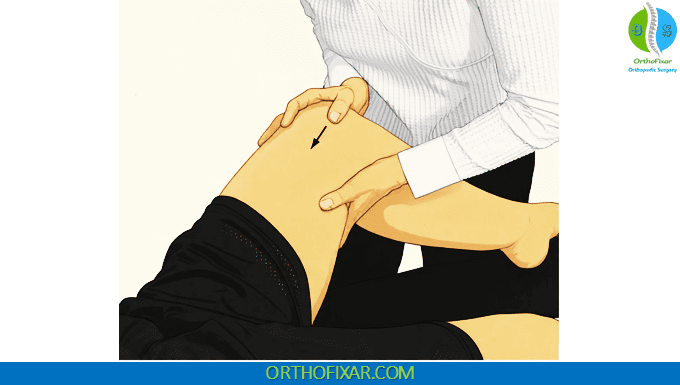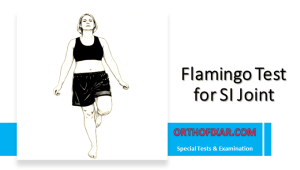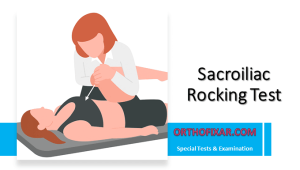Femoral Shear Test

The Femoral Shear Test, also known as the Posterior Shear (POSH) Test, is used to assess the integrity and pain provocation of the sacroiliac (SI) joint. It helps to detect dysfunction or irritation within the SI joint complex. This test is similar to Thigh Thrust Test.
The sacroiliac joint is a strong, weight-bearing synovial joint that connects the sacrum to the ilium. This joint experiences significant biomechanical stress during daily activities, and dysfunction here can manifest as lower back pain, buttock pain, or referred pain down the lower extremity.
See Also: Pelvic Anatomy
How to Perform the Femoral Shear Test?
- The patient lies in the supine position (on their back) on the examination table.
- The examiner stands beside the patient.
- The patient’s hip and thigh are slightly flexed, abducted, and laterally rotated—approximately 45° from the midline.
- The examiner supports the patient’s knee and applies a gradual downward (posteriorly directed) force through the long axis of the femur.
- This maneuver produces an anterior-to-posterior shear stress on the sacroiliac joint on the same side.
See Also: Thomas Test

What is the Positive Femoral Shear Test?
The test is considered positive if the patient reports pain localized over the sacroiliac joint during the maneuver. A positive result indicates SI joint dysfunction, inflammation, or irritation.
The Femoral Shear Test is one of several provocation tests used to identify SI joint pathology. When combined with other SI joint tests – such as FABER (Patrick’s Test), Gaenslen’s Test, and Compression/Distraction Tests – the diagnostic accuracy improves. Isolated findings should be interpreted with caution and correlated with clinical history and other examination findings.
Summary Table
| Feature | Description |
|---|---|
| Test Name | Femoral Shear Test (Posterior Shear Test / POSH Test) |
| Purpose | Detect SI joint dysfunction or pain |
| Patient Position | Supine |
| Examiner Action | Apply graded axial load through femur (anterior-to-posterior direction) |
| Positive Sign | Reproduction of pain over SI joint |
| Indication | Sacroiliac joint irritation or dysfunction |
References & More
- Porterfield JA, DeRosa C. Mechanical Low Back Pain: Perspectives in Functional Anatomy. Philadelphia: WB Saunders; 1991.
- Orthopedic Physical Assessment by David J. Magee, 7th Edition.
- Lifetime product updates
- Install on one device
- Lifetime product support
App Features:
- Lifetime product updates
- Install on one device
- Lifetime product support
App Features:
- Lifetime product updates
- Install on one device
- Lifetime product support
App Features:
- Lifetime product updates
- Install on one device
- Lifetime product support





